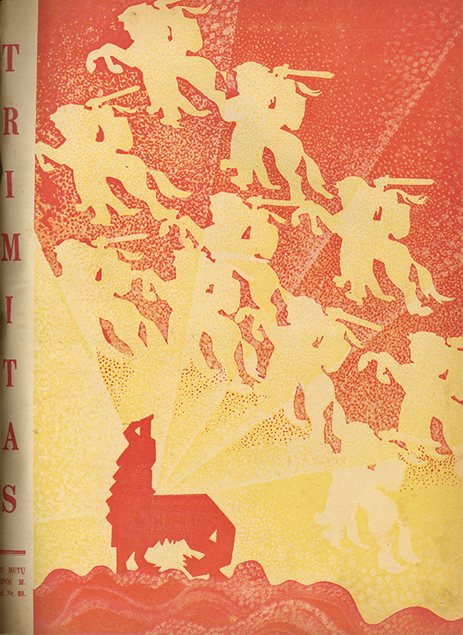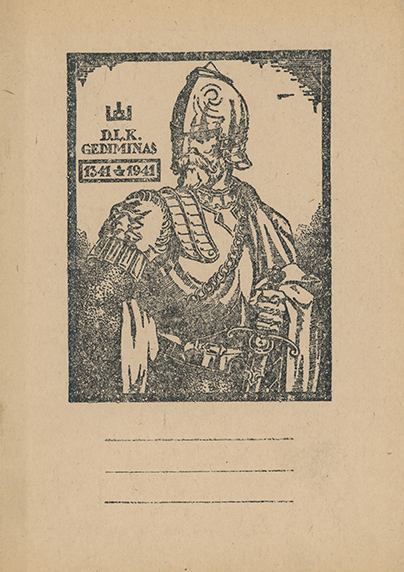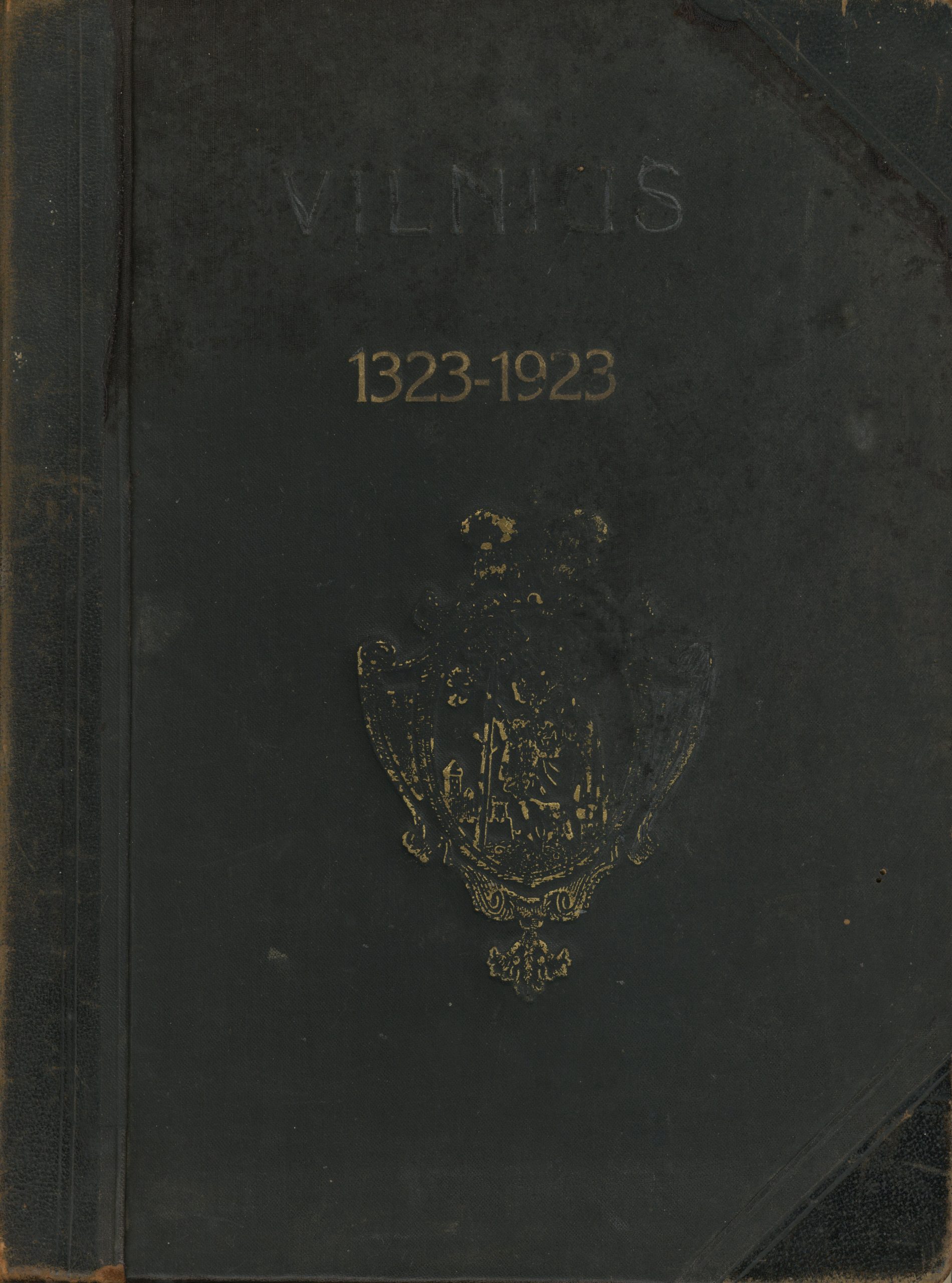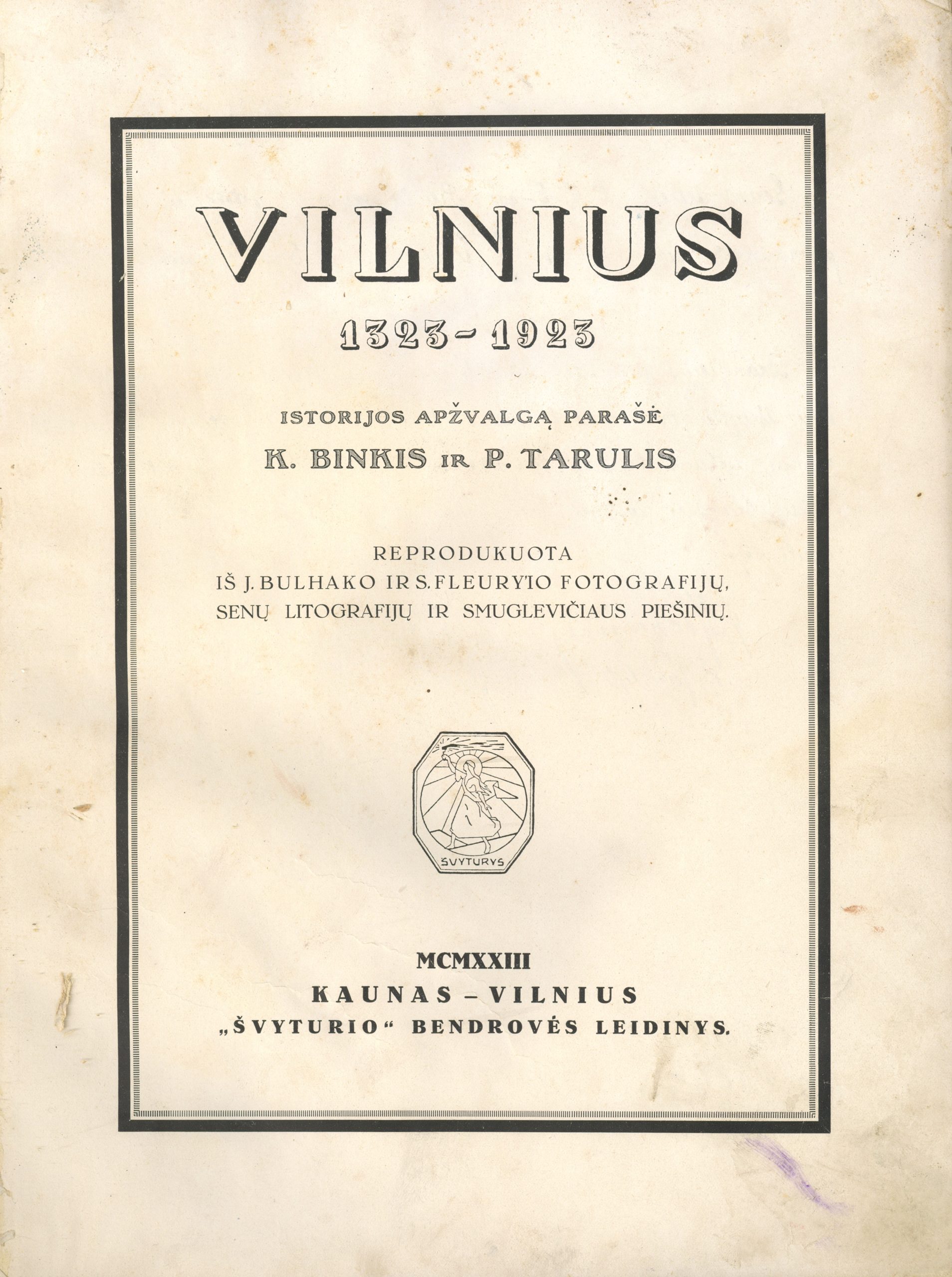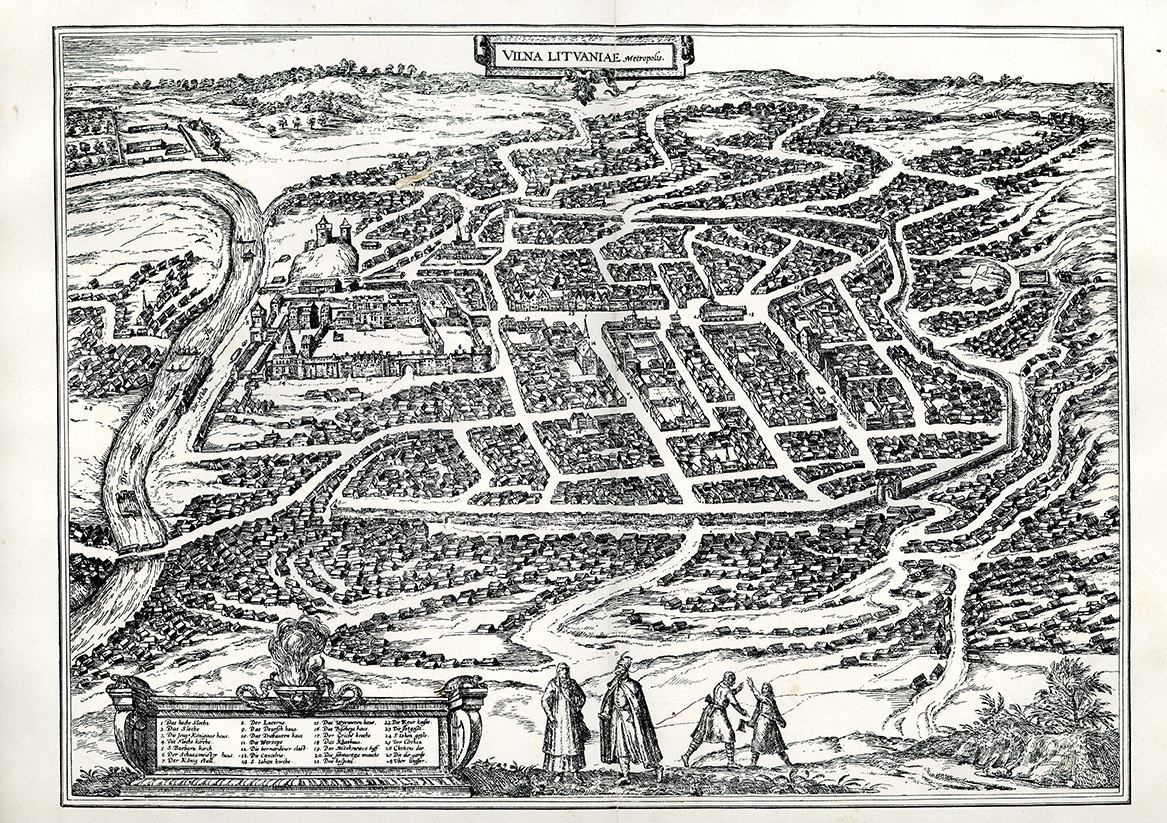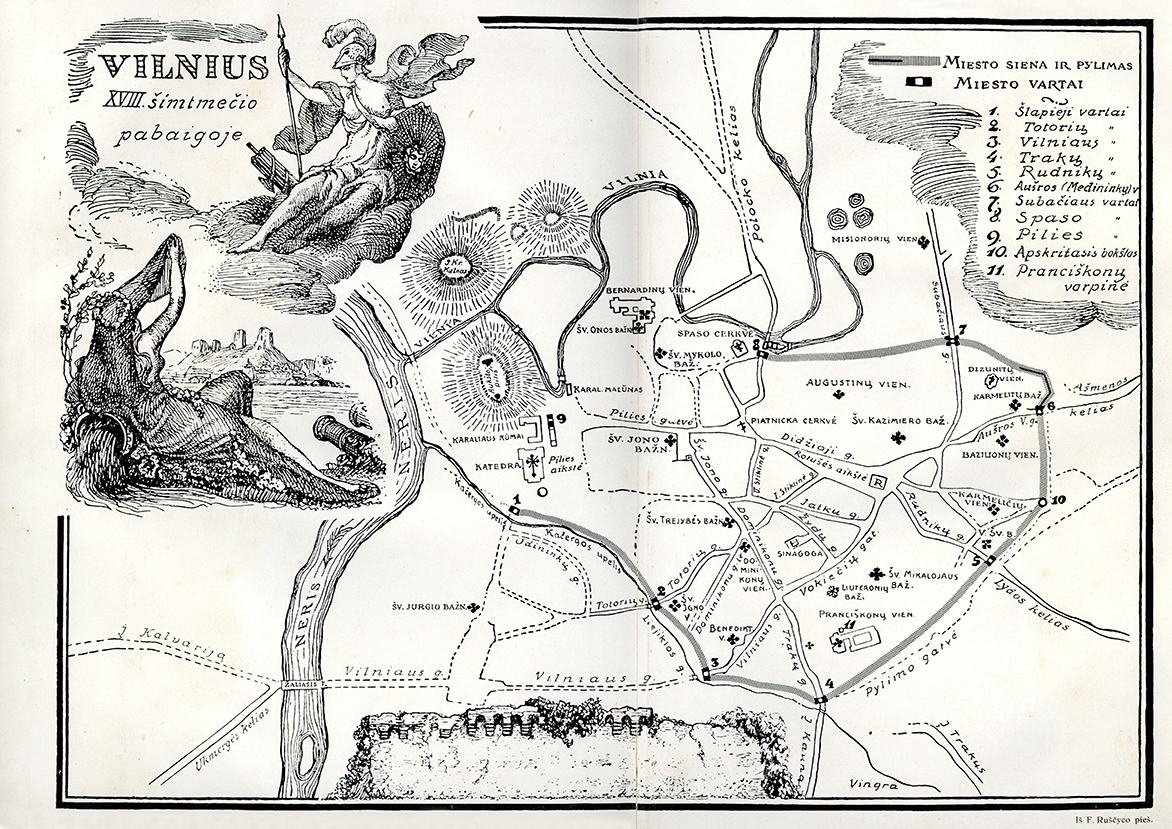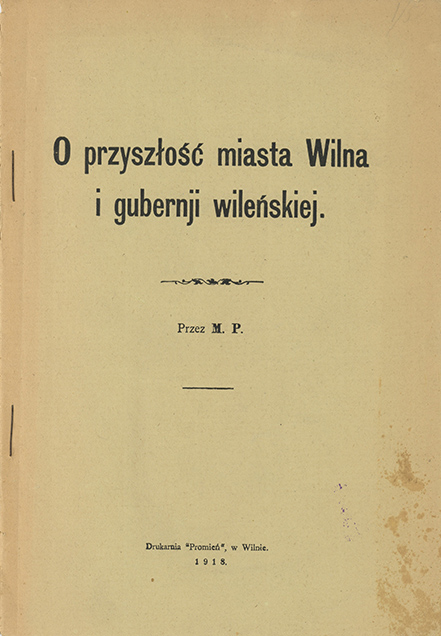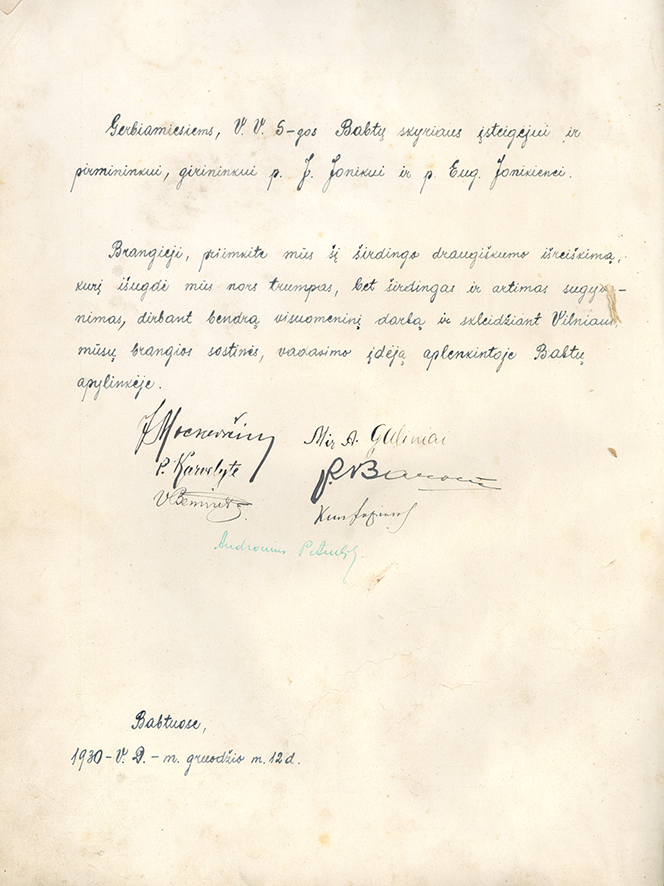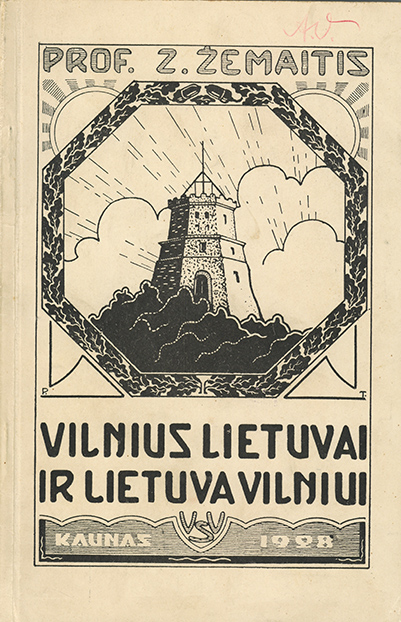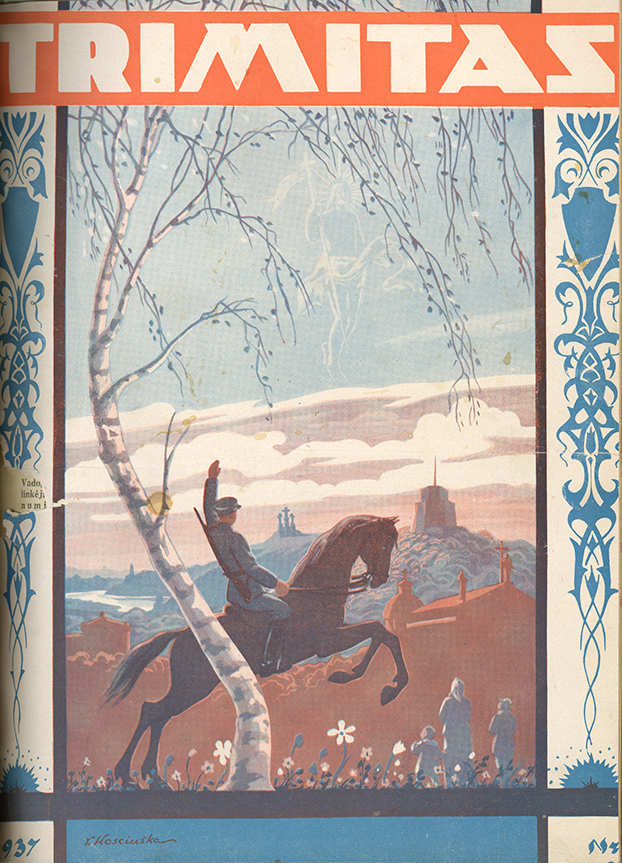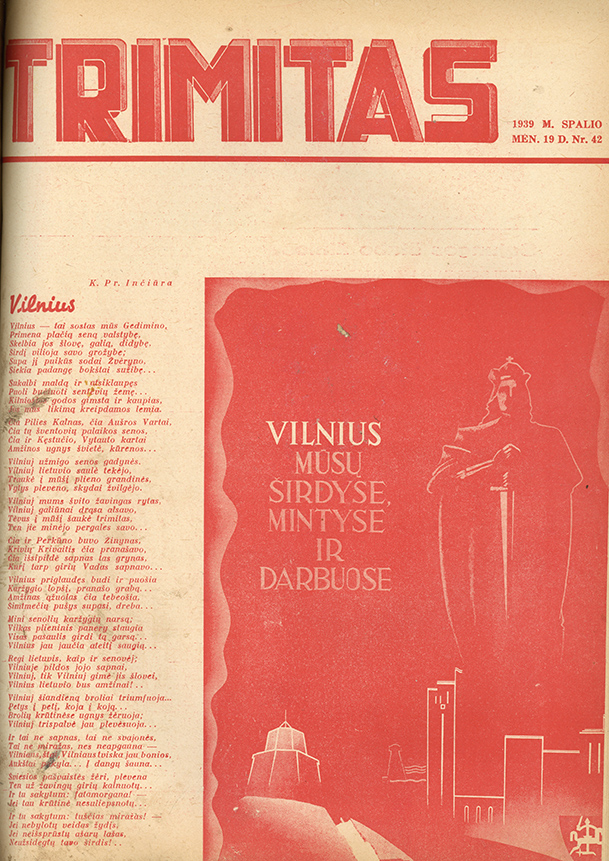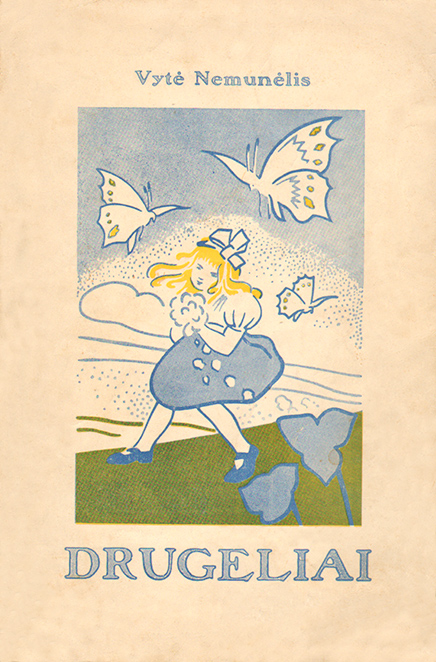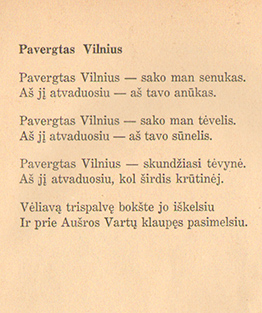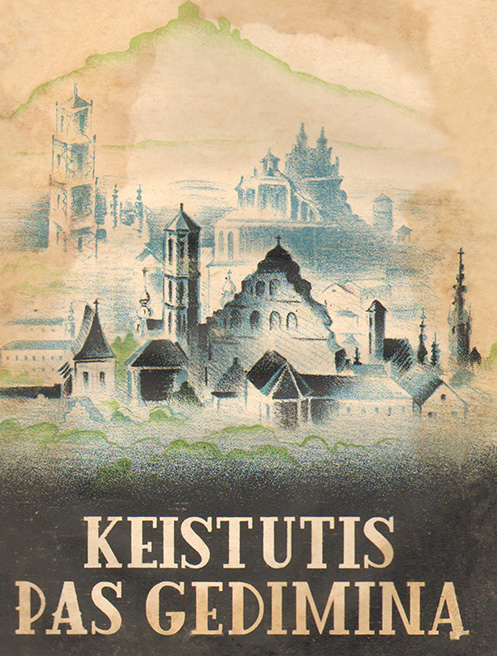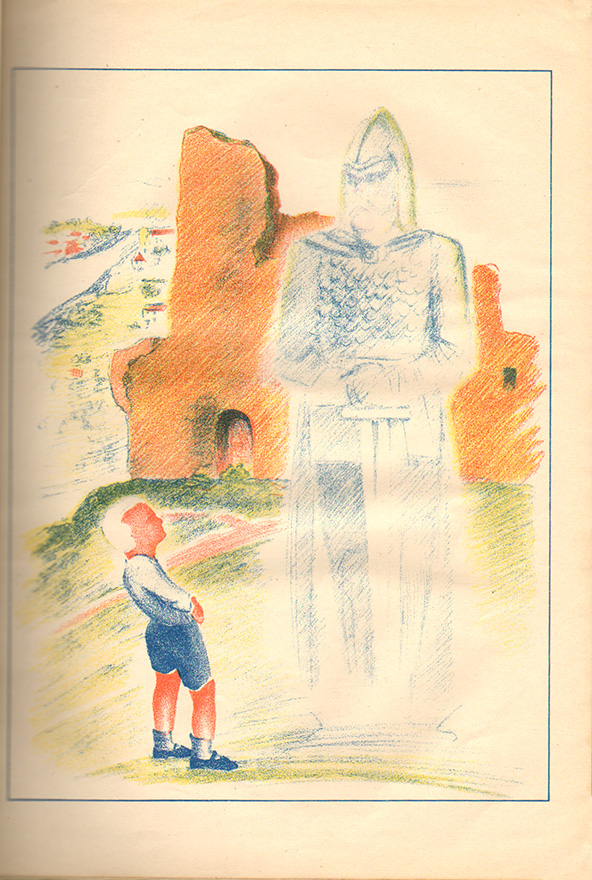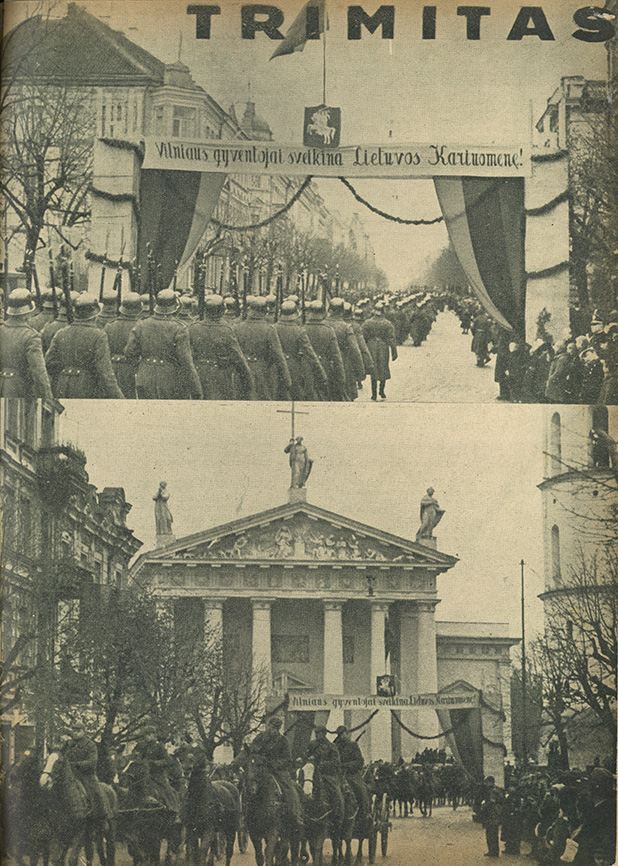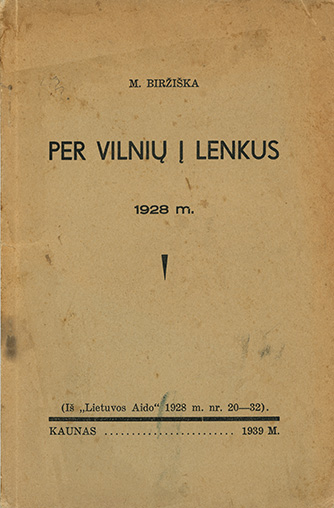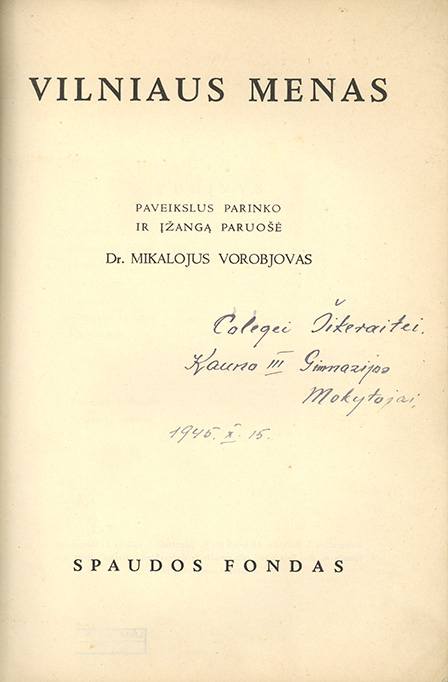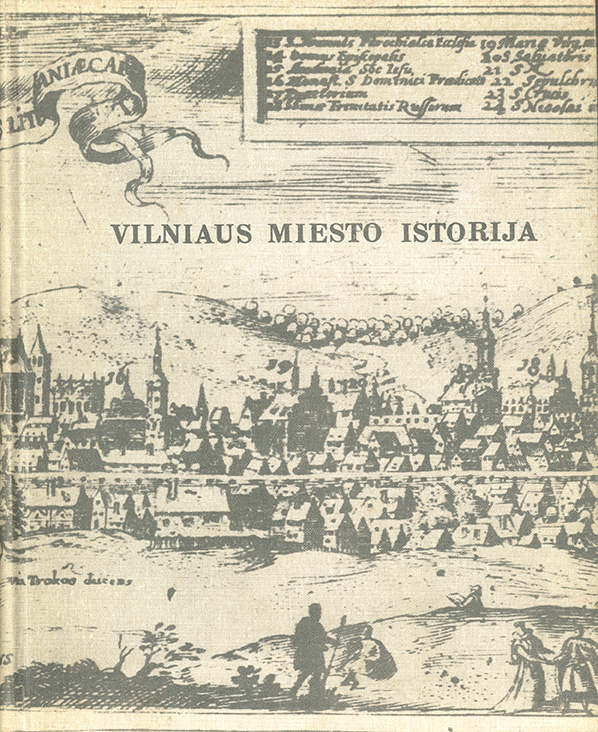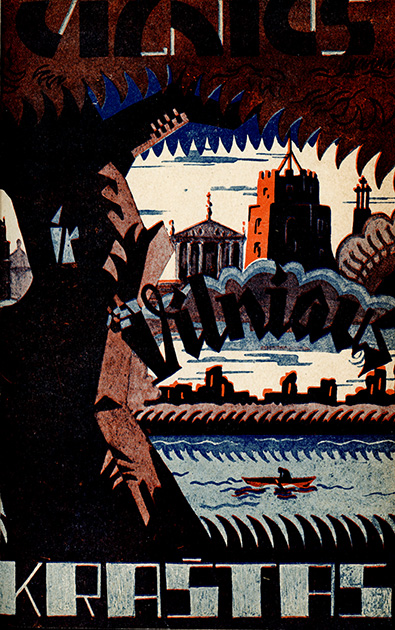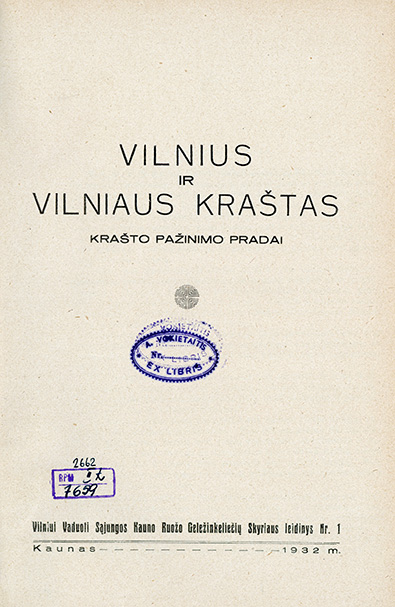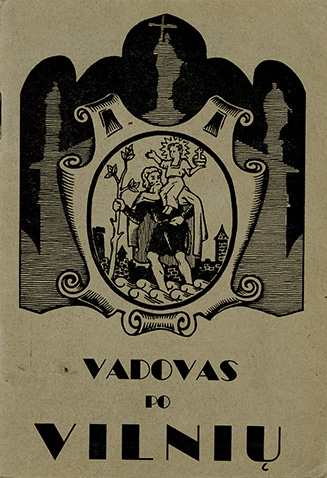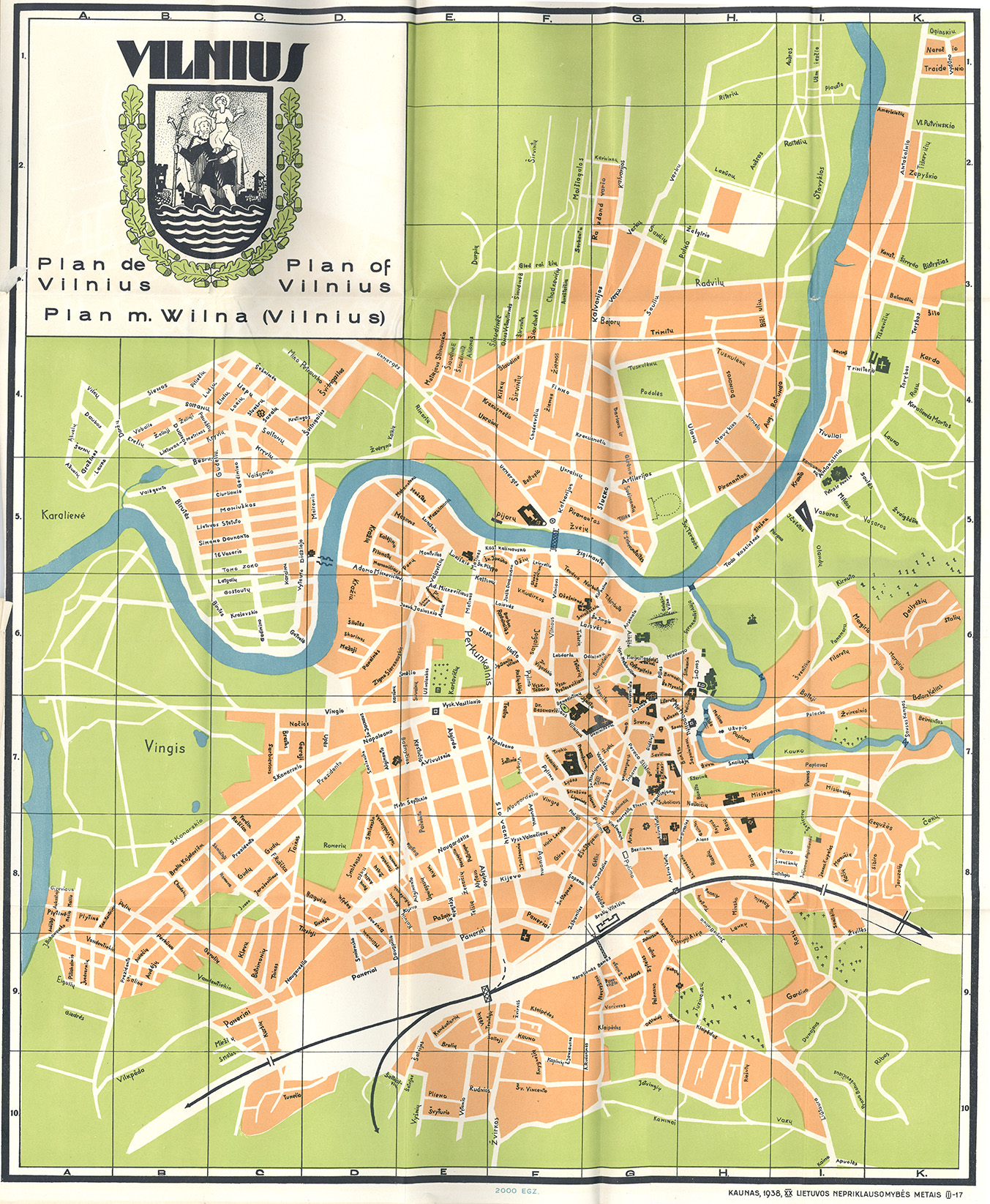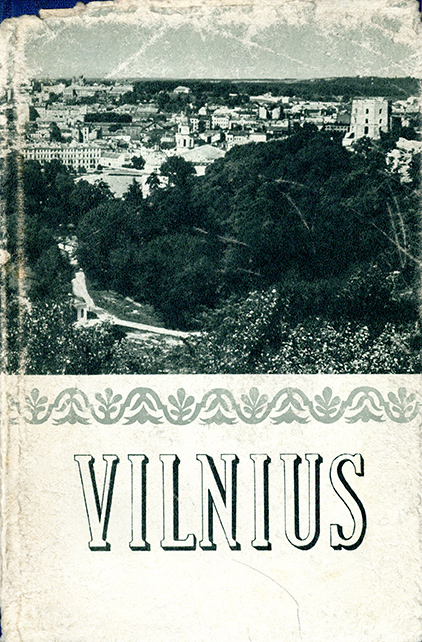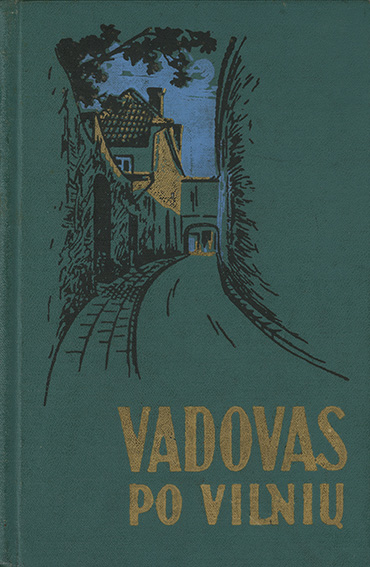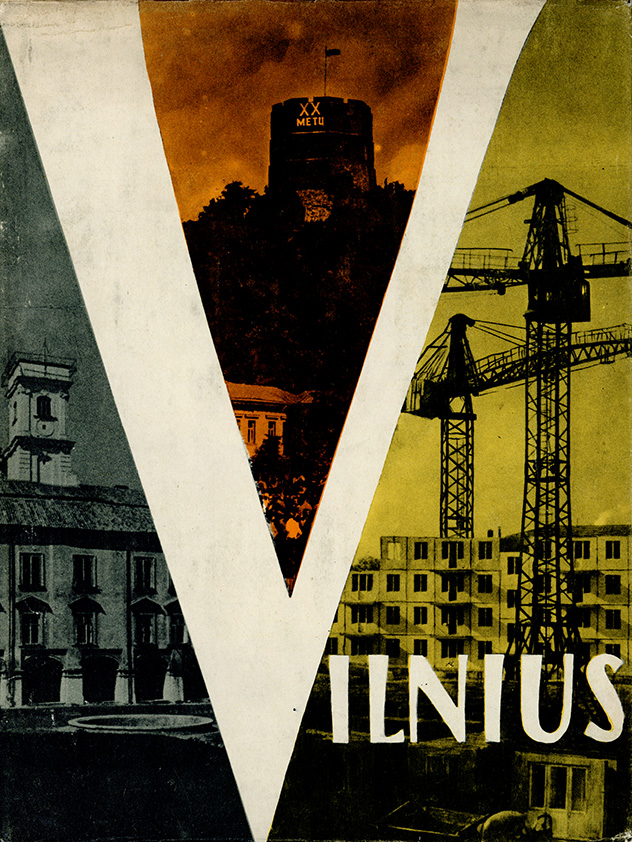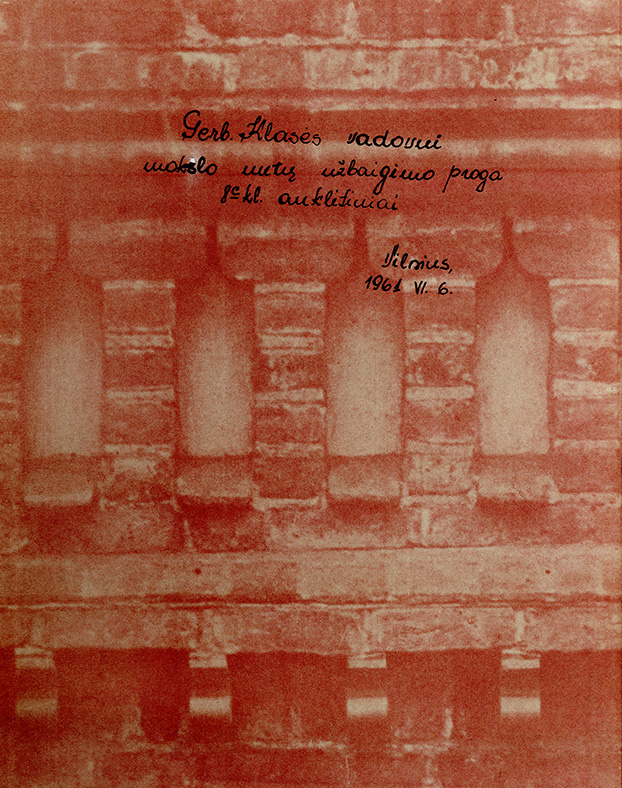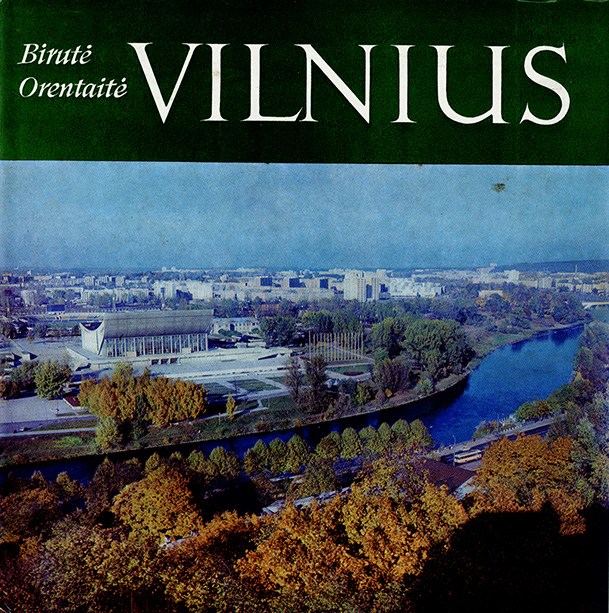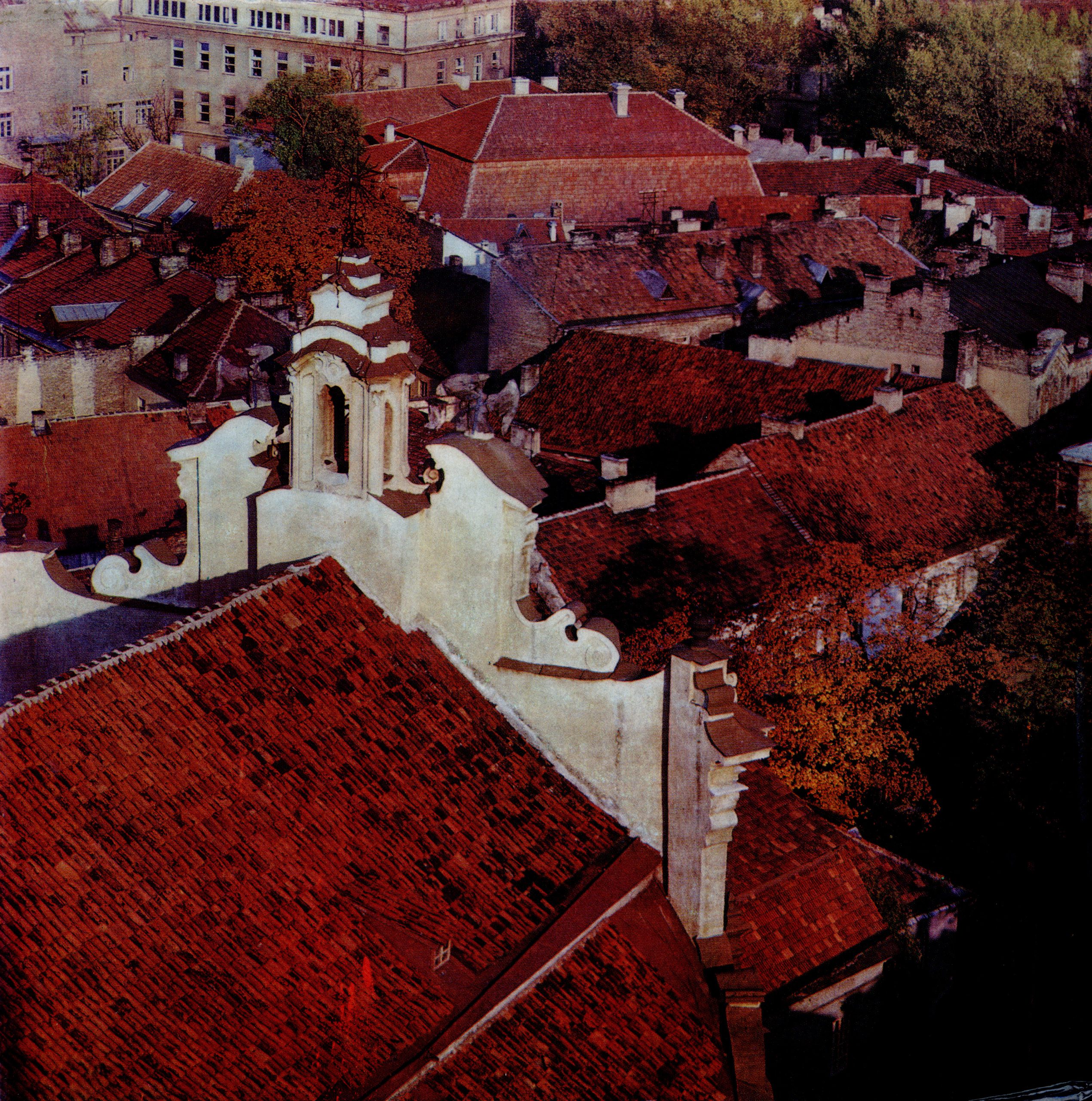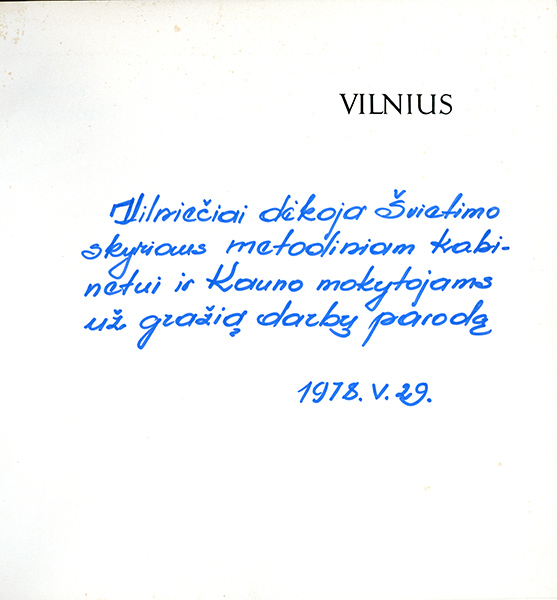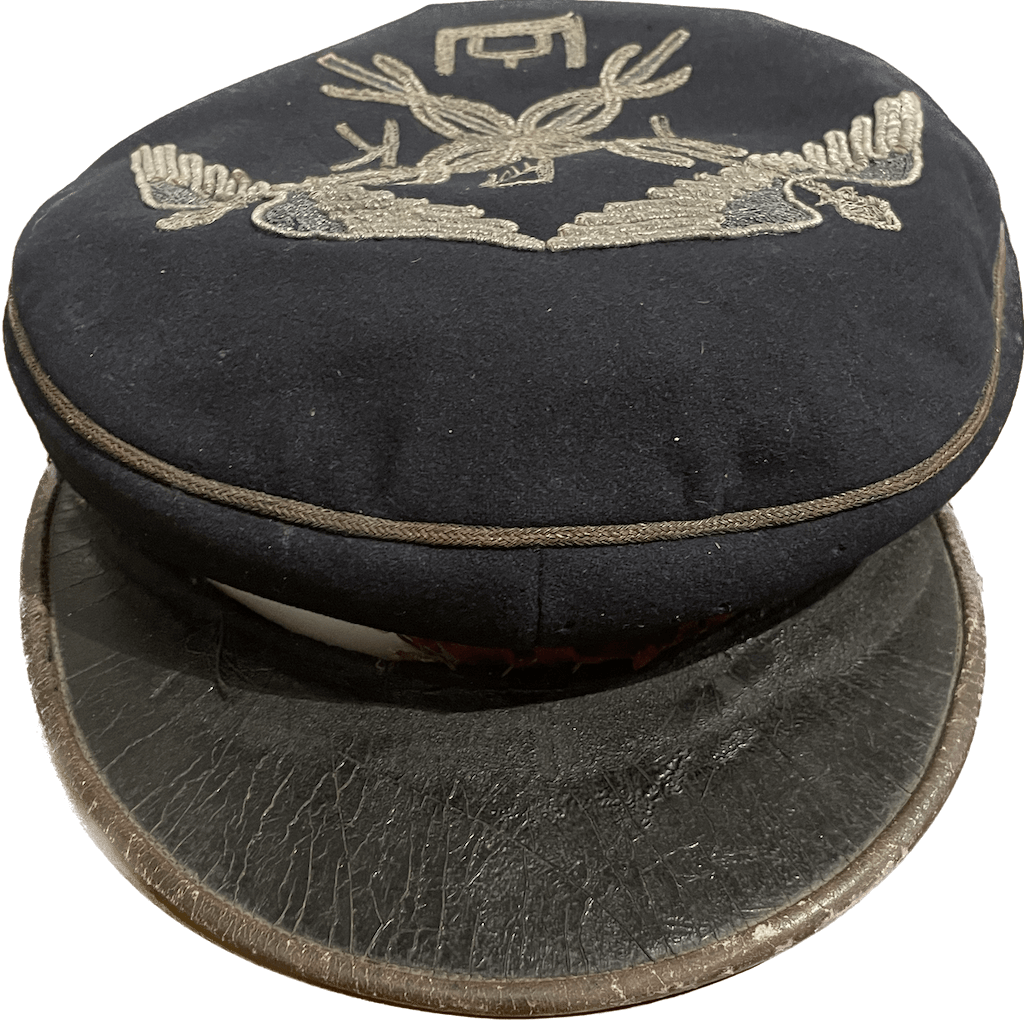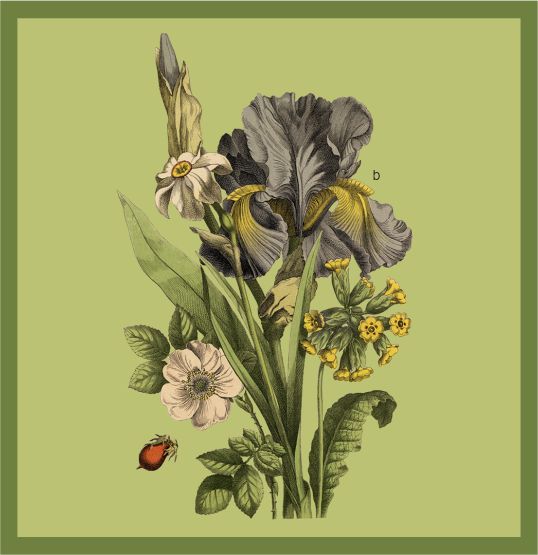In 1323, the news of the friendly city of Vilnius, spread to Western Europe by the will of the Grand Duke of Lithuania Gediminas, became the starting point for the city’s written history. Over the centuries, in the collisions of East-West European politics, in the gaps of geopolitical maps, Vilnius has faded away and the light of a great city has shone again. In the 3-4 decades of the 20th century, Vilnius became a living nerve of the Lithuanian nation, a celebrated, dreamed-of capital of Lithuania for both the small and the large. Vilnius was the cradle of the nation’s spiritual rebirth, a signpost for the destruction of idols, a hope in January 1991. The capital of Lithuania, penetrating dreams…
To commemorate the 700th anniversary of the 700th anniversary of the mention of Vilnius in the written sources of the capital of Lithuania, the exhibition “Reflections of Vilnius City in the Museum’s Collection of Publications” is being presented from the museum’s collections. This is a collection of research, historical, popular and promotional literature created and published in the 20th century – the material of the Publications Collection on the history of Vilnius, the city as a cognitive and tourist object. The material from the Collection of Publications is complemented by several examples from the Periodicals, Teaching Tools and Objects collections. Although the virtual exhibition has been selected for rarer books with an informative, educational mission and lasting value, it has been decided to make public the thousand-circulation publications – photographic albums. During the Soviet years, the tradition of gifting photo albums on various occasions led to the accumulation of photo albums in the Museum’s collections.
Historic Vilnius
“To all Christians spread throughout the world, men and women, and together to the especially famous cities of Lubek, Zund, Bremen, Magdeburg, Cologne and others all the way to Rome, Gediminas, by the grace of God the king of Lithuanians and Russians, the ruler and prince of Zemgale [sends] a greeting of his immutable respect and favor. With this letter of ours, we are giving a message to both those present and absent and future generations that we have sent our messenger with our letter to the apostolic Lord and our holy father for the acceptance of the Christian faith, and we know his answer; we also look forward to his legates every day; so if they come to you, give them help and spend it with respect with us. We are determined to consider ourselves a debtor in a similar or more important case, because know that you have just done good to them, you have done it to us. So all that we have written in a letter to the holy father and to our lord pope, we will endeavour, in honor of God and the glory of the church, to keep it holy and without violating anything, to build churches, as we have already done. Know that one for the Dominicans was newly built a couple of years ago in our city of Vilnius. Because of those that [we built] for the Franciscans — one in our aforementioned city of Ours, Vilnius, the other in Naugarduk — this latter was burned by the Prussian Crusaders, [in an effort] to destroy Christianity in our land and exterminate the Franciscans. This year, we have ordered it to be restored in honor of almighty God, his mother, the virgin Mary, and Saint Francis, so that these brethren can continue without ceasing the worship of Christ for our benefit, for the blissful salvation of our children and wives, as well as of all those who worship god Jesus Christ. […] In addition, for every man of good will, we open the land, the realms and the kingdom. / To the knights, the gunmen, the merchants, the doctors, the blacksmiths, the racists, the greyhounds, the fur-makers, the millers, the shopkeepers, and any artisans— all of whom we want to all of them to all of them, according to his position. Those farmers who will want to come have been cultivating our land without tax for ten years. . Merchants go and leave freely, without any tolls and duties, without any obstacles at all. If Knights and gunmen want to stay, I will reward them with income and hours as befits. / So all the people only exercise the civil right of the city of Riga, if then the council of the wise is not better conceived. / Whoever will obstruct the execution of the aforesaid [provisions] and even make it impossible for those who are going to become acquainted with the above, will hurt us painfully; all they know is that [such an insult] is not done to them, but to our royal greatness. / After all, from this time onwards we want to do no harm to anyone, but to provide help to all and to consolidate by eternal union peace, brotherhood, and charity with all the believers of Christ. / Lest these [regulations] ever be changed, we have witnessed this letter and sealed it with our seal. / Given in our city of Vilnius after deep deliberations in 1323 in the year of the Lord, in the conversion of the Apostle of St. Paul [on the day]. / We ask all the interrogators to write off this letter and to nail a copy of it to the door of the church, and to send the letter itself, on favor of us, without any delay, to the neighboring city, so that in this way the honor of God may become known to all. / Pray to God for us.”.
Excerpt from 25 January 1323. Letter from the Grand Duke of Lithuania Gediminas to the citizens of Lübeck, Zund, Bremen, Magdeburg, Cologne and other cities. “Letters of Gediminas”. Prepared by V. Pašuta and I. Štal. Vilnius: Mintis, 1966.
“Vilnius 1323–1923. The review of the story was written by K. Binky and P. Tarulis. Reproduced from photographs by J. Bulhak and S. Fleury, old lithographs and drawings by Smuglevich. Covers, inscriptions, initials and endings of Paul Galaunė.” Kaunas–Vilnius, 1923.
Copies of ferdynand Ruszczyc’s drawing and sixteenth-century drawing from the Brown Atlas.
In the 2-4 decades of the xx century, Vilnius was a matter of conscience for every Lithuanian. The majority of the Lithuanian population was the members and supporters of the “Vilnius To Lead the Union”. And the poets felt a sacred obligation to sing the part of the enslaved Vilnius, to remind and glorify the historical capital of Lithuania in verses, to inspire young people to return the capital Vilnius to the Lithuanian nation.
Vilnius to lead the vajus
The publication is a gift to the founder and chairman of the Babtai branch of the “Vilnius Leadership Union” J. Jonikas and E. Jonikiene. Signed by comrades in the 1930s – the year of Vytautas the Great.
The publication analyzes topics about Vilnius, the capital of Lithuania, as the center of Lithuanian transport, the economic center of Lithuania, the religious and cultural center of Lithuania, the national center of Lithuanians, the possibilities of vilnius liberation and the preparation for the leadership of Vilnius.
“Hey, world, we will not calm down without Vilnius!
Old Vilnius was ours – ours will be!
We were born in Vilnius and only in Vilnius will we be reborn…
On Gediminas Hill, the giants will wake up…
Hey, world, we will not calm down without Vilnius!
Our thoughts will sail to Vilnius forever…
We’re going to go down into it like morning with the sun…
Vilnius castles will have their Vyčiai…
Iron Wolf Panery will stiffen!”
Excerpt from petras Vaičiūnas’ work “Hey world, we will not calm down without Vilnius”. 1938
Vytė Nemunėlis (Bernardas Brazdžionis). “Butterflies”. Illustrations by Vlada Stančikaitė. Kaunas, 1934.
Kazys Binkis. “It’s a freak with Gediminas. It’s a fairy tale these days.” Kaunas, 1940 illustrations by Liudas Vilimas.
In the publication, M. Biržiška shares the impressions of the 1928 trip through Polish Vilnius, Warsaw, Lviv, describes the diplomatic language, human relations, and gives reflections already in the context of the political events of 1939.
The publication, prepared by the well-known art critic, art historian, educator M. Vorobyov, enriched with professional photographs by Jan Bulhak and Edmund Zdanowski (Edmund Zdanowski), according to Inesa Kuliavaite – “one of the legendary photographs of the twentieth century. Books of Lithuanian Cultural History” (quoted from the Master’s thesis “Press and Architecture: Representation of Vilnius Architecture in Cognitive Publications”).
The intellectual work during the years of Soviet occupation was not readily available to the reader. In the context of the times, this museum exhibit reveals the exceptional appreciation and trust of Jadvyga Šikeraitė, a teacher at Kaunas 3rd Gymnasium, among her colleagues.
Publications to get to know Vilnius and the surrounding area
“Vilnius and Vilnius region. The beginnings of the knowledge of the land.” Kaunas, 1932.
The book, published by the “Committee of the Kaunas Section railway division of the Union for the Management of Vilnius”, collected knowledge about the inhabitants of Vilnius city and surroundings, social and cultural life, and the nature of the region. The publication reads: “A large part of Lithuanian society, despite the difference in nationality or religion, supported this work with great desire and trust. […] A significant number of subscribers are of Jewish nationality, so we also printed the summary of this book in Jewish.”
In the words of the publishers it is written: “It was conceived to publish a plan of Vilnius city with brief descriptions of the most famous places of the capital and, at least in this way, to introduce Vilnius, to serve L. Lithuanian society and especially young people.”
“The unique architectural face of the city, which has developed over the centuries, will be preserved in the future of Vilnius, but the city will also acquire completely new features. The new buildings and equipment will become central, dominant.”
“From all the mountains surrounding Vilnius, the sights of heart-wrenching beautifulness open up to the valley of the city. However, perhaps the most beautiful sight – the huge panorama of Vilnius – you will see from the mountains standing between Karoliniškės and Justiniškės. Having passed the Karoliniškės mountains and left a huge orchard established by agricultural technicians in the fields of the former Justiniškės manor on the right, we enter the village of Viršuliškis.”
The images captured in the publication are far from reminiscent of today’s Vilnius, and the descriptions testify to the enormous speed of the city’s development. The publication was prepared from Vincas Taskis, a member of the “Union for the Leadership of Vilnius”, who returned to Lithuania in Soviet exile and was active in the interwar period.
The publication is presented to readers as – “the first after the war “Guide after Vilnius”, which has long been awaited by tourists.”
Vilnius albums – popular gifts in the 7-9 decades of the XX century
The exhibition was prepared by Gabija Mackevičiūtė, museum director of the Lithuanian Museum of Education
